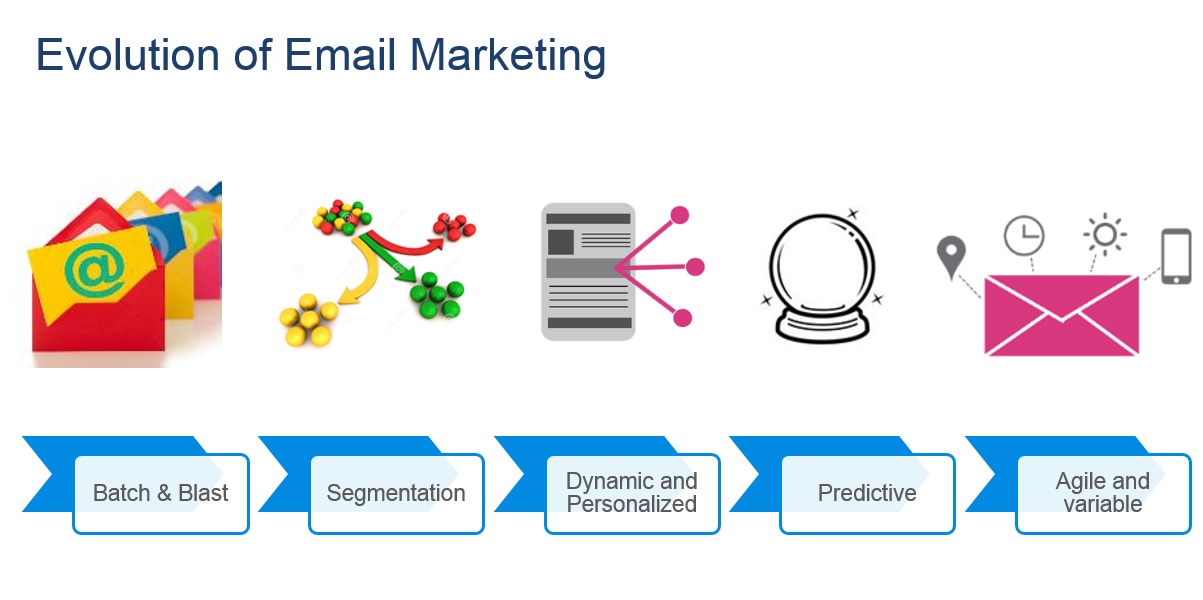But email marketing is evolving. Segmentation, personalization, mobile: All impact returns on investment. Segmentation was one of the ways — separating a file into like-minded groups (by behavior or demographics) and sending relevant emails to each group. Data & Marketing Association, in a 2016 survey, found that 31 percent of buyers who initially open an email on mobile will wait until they are at their computer to purchase. Evaluating Your Program Zeta Global, a lifecycle marketing company, developed a tool to help marketers evaluate their email marketing program. The most progressive senders segment their recipients by engagement or demographics. Those who tailor emails to groups or add personalization to reflect a user’s interests display more complex strategies. The most advanced senders create unique email content by individual with every deployment. Testing and refinement are required to continually optimize any marketing campaign. Mature programs will track campaign metrics and compare to benchmarks and goals.
Email is the workhorse of direct marketing. The basics have remained consistent for years. Best practices from 10 years ago are still relevant.
But email marketing is evolving. Segmentation, personalization, mobile: All impact returns on investment. In this post, I’ll review the evolution of email marketing since its inception. I’ll offer a framework to evaluate how your program stacks up against the most sophisticated senders.
Evolution of Email

Email marketing is increasingly complex. Initially, marketers mainly used a “batch and blast” strategy, sending the same email to an entire file. Marketers could sit back and watch sales roll in. It wasn’t long, however, before they looked at ways to increase their already solid returns on investment.
Segmentation was one of the ways — separating a file into like-minded groups (by behavior or demographics) and sending relevant emails to each group. Segmentation remains very effective.
But segmentation has evolved. It now includes dynamic content and personalization. Marketers can create unique emails for each subscriber based on available data — purchase history, geolocation — and automatically insert it into the body or subject line.
Using data to fuel relevancy evolved into predictive email marketing, wherein a company applies data to predict what shoppers may or may not purchase. A good example is product recommendations.

The latest evolution is agile and variable emails, wherein the content of an email can change when…

COMMENTS